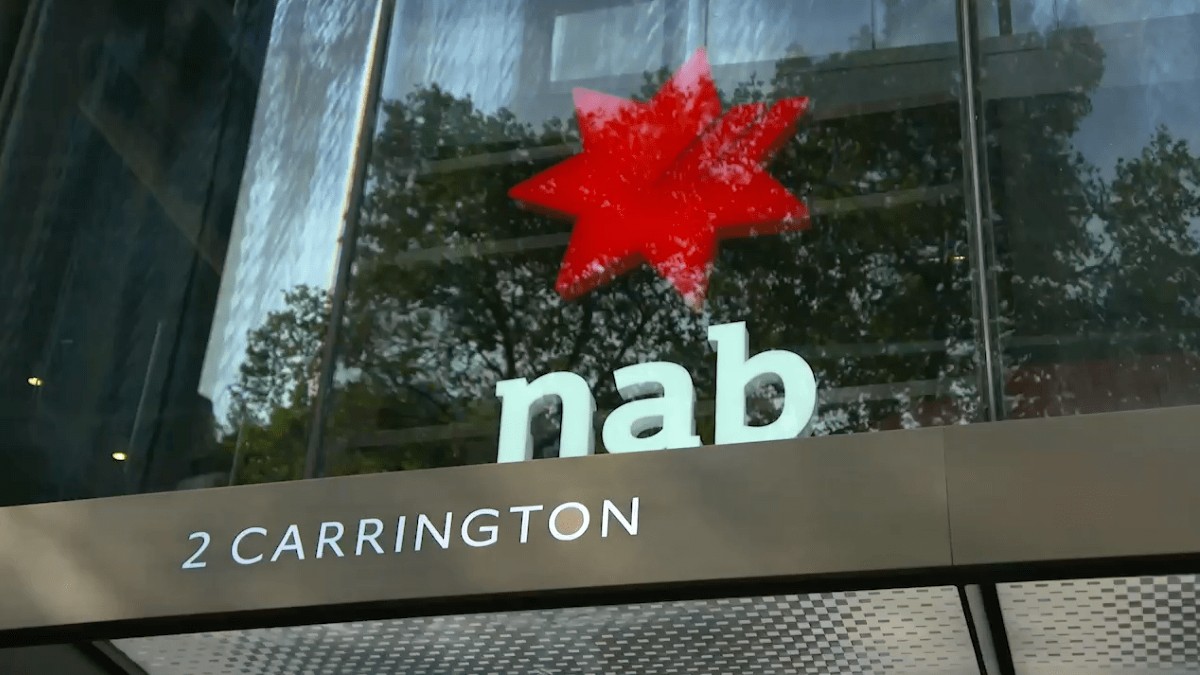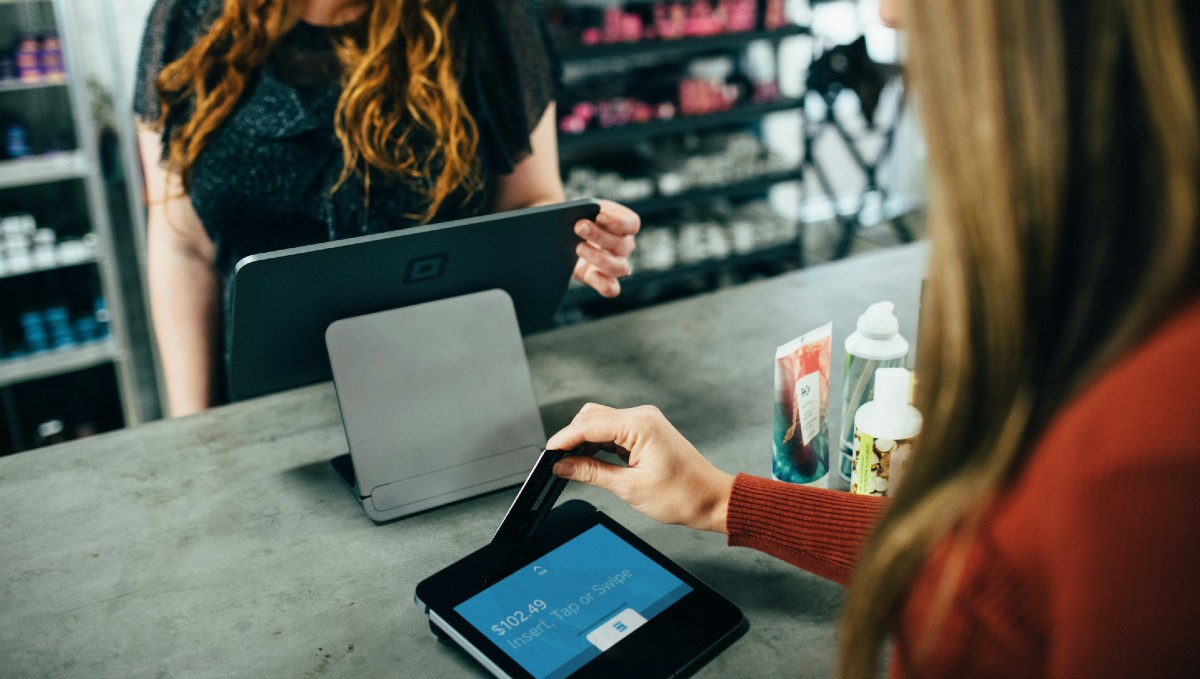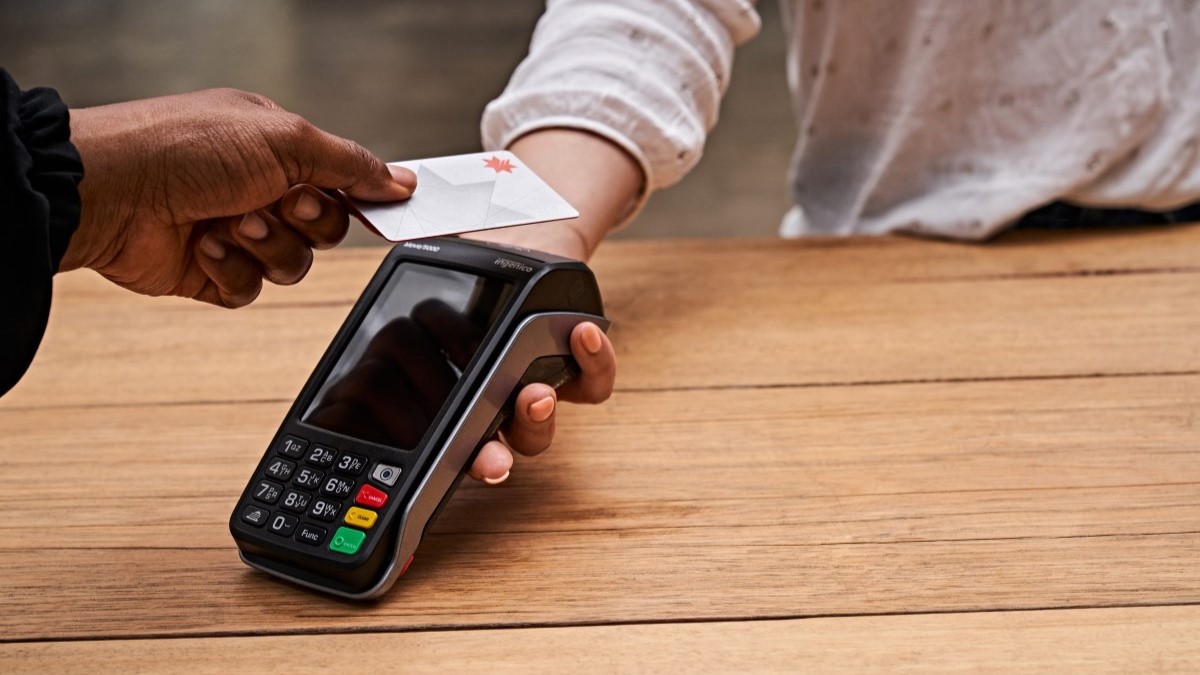When travelling, you need some method of transferring and spending money. Some people prefer to simply store cash in their wallet (or bum bag/fanny pack), but this has its flaws - you can easily lose cash, pick pocketers can pinch it, and carrying it around can be a pain, not to mention nothing screams TOURIST quite like a bum bag does.
Aside from carrying cash, you've generally got three options for your travel money:
-
Travel money cards
-
Credit cards
-
Debit cards
Each of these options comes with its own set of advantages and disadvantages. Some are better suited for certain types of travellers and destinations, while others offer cost savings depending on how you use them.
So, who wins battle of the best card for travelling? Let's try to find out.
What is a travel money card?
Travel money cards, also simply referred to as travel cards, can be pre-loaded with the foreign currencies you need for spending or withdrawing cash overseas. You can even store multiple different currencies if you're doing a planet-hopping trip.
But converting all your travel money at once can be both a blessing and a curse. By locking in a foreign currency ahead of time, you can protect yourself against dips in the Australian dollar, but you can also miss out on big increases.
How do travel money cards work abroad?
Depending on the card you choose, you can load between half a dozen to 13 currencies. These currencies will usually be the major ones: US dollar, British pound, New Zealand dollar, Indonesian rupiah, Japanese yen, Chinese yuan etc. If you try to pay in a currency that isn't loaded on the card, you'll be charged the earlier-mentioned currency conversion fee.
Travel money cards are usually Visas or Mastercards, so like credit or debit cards, you can typically make purchases or withdraw from an ATM at any place that uses the Visa or Mastercard network.
You should also be aware that travel cards can have maximum balances of up to $100,000, but this probably won't be an issue for short trips. It can also take several business days to load extra money onto your card if you run out, so budget properly!
Also, like debit cards, travel money cards may not be accepted for pre-authorisations (e.g. for car rentals and hotel check-ins) and don't often offer the same level of security as a credit card.
Travel money card fees
Fees are an important consideration when choosing travel cards. Not being aware of the high fees charged by your card can add hundreds of dollars to your final holiday bill.
Of the travel money cards currently available to travellers today, they tend to charge the following fees:
-
Application/initial loading fees: charged for initially ordering the card, either percentage of the balance (around 1%) or between $10-$15.
-
Top up and reloading fees: if you run out of cash you might have to pay up to $15 to put more on.
-
Inactivity fees: Not using the card for a month could lead to an inactivity fee as high as $4.
-
Closing fees: can be as high as $15 but most cards don't charge one.
-
Refund balance fees: can be between $10-$15 if you wish to withdraw any leftover cash at the end of your trip.
-
Currency conversion fees: If you're paying in or withdrawing a currency that isn't one of the ones loaded on the card, you could be charged a currency conversion fee of up to 5.95% (of the transaction/withdrawal).
There are also replacement card fees, which can also be as high as $15 too. It's worth noting that these fees mentioned are the maximum you can be charged - many cards now don't charge fees for most of these things. There has been a number of new cards marketed as 'fee-free' options in recent years.
Most of these higher fees seem to be restricted to a few cards in particular.
Travel money card exchange rates
For travel money card users, one of their biggest costs is the exchange rate margin which hits them whenever they load money onto the card.
You see, when your currency is converted into another, the exchange rate you get is not the exchange rate you see on Google or reported on the evening news - that's the mid-market rate. Foreign exchange services have a margin built into the exchange rate, ensuring the rate you get is always worse than the mid-market rate. For travel money card providers, this margin is likely to be one of their biggest profit-generators.
A study by the now-cancelled ABC show The Checkout in 2014 reported that travel money cards have exchange rates that are, on average, between 4-5% worse off than the exchange rates on credit and debit cards (i.e. Visa, Mastercard or Amex's exchange rates), which are normally pretty close to the mid-market rate.
Source: The Checkout
Say you were going to the UK and wanted to load up a travel money card with some pounds sterling. On a range of travel money cards we tested (on the 26th February 2025), loading $2,000 AUD would get you around £1,000 GBP, while on Visa or Mastercard's exchange rates, $2,000 AUD would get you around £1,027 GBP. That's around £27 ($53) difference.
You can also get hit with the poorer exchange rates when withdrawing any leftover currency at the end of your trip, so it might be more economical to buy some duty-free stuff at the airport.
Of course, by loading all of your travel cash onto the travel card before the trip, you're effectively locking in an exchange rate, which can work in your favour if the value of the Aussie dollar falls while you're travelling.
So, are travel cards worth it? The answer depends on your needs. If you want to lock in exchange rates and avoid fluctuations, they can be useful. However, due to their fees and sometimes worse exchange rates, they may not be the most cost-effective option compared to credit or debit cards.
Pros and cons of travel money cards
Pros of travel money cards:
-
Fixed exchange rates - Travel money cards allow you to lock in exchange rates in advance, which means you won't be impacted by fluctuations in the Australian dollar during your trip. If the Aussie dollar weakens, you won't lose out.
-
Multiple currencies on one card - If you're visiting multiple countries, many travel money cards let you load several different currencies, making it easy to switch between them.
-
Separate from your main bank account - Since these cards aren't linked to your everyday bank account, they provide an extra layer of security. If stolen, a thief only has access to the preloaded funds, not your entire account.
-
No debt risk - Unlike credit cards, you can't overspend on a travel money card. You can only use the amount preloaded onto it, helping you stick to a budget.
-
Some offer rewards points - Certain travel money cards are linked to airline loyalty programs, allowing you to earn points on transactions.
Cons of travel money cards:
-
Worse exchange rates - Compared to credit and debit cards, travel money cards often have a margin of 4-5% built into the exchange rate, meaning you get less foreign currency for your money.
-
High fees - Many travel money cards come with a long list of fees, including loading fees, reloading fees, inactivity fees, ATM withdrawal fees, and even a fee to close the card and withdraw leftover funds.
-
Limited usability for pre-authorisations - Hotels and car rental companies may not accept travel money cards for security deposits, which can make booking accommodations or transport more difficult.
-
Slow to reload funds - If you run out of money, reloading your card can take several business days, which can be a problem in an emergency.
-
Not always widely accepted - Some businesses, particularly in less touristy areas, may not accept travel money cards, leaving you needing a backup option.
Credit cards
How do credit cards work abroad?
Many travellers have the travel card vs credit card debate when deciding how to pay abroad. Credit cards function overseas in pretty much the same was as they do in Australia, but with some added international fees. Credit cards allow you to spend up to your credit limit, making the necessary currency conversion at the time of the transaction. However, you may be charged a foreign currency conversion fee, and/or an international ATM withdrawal fee. However, it's possible to avoid these charges by shopping around for a fee-free international credit card.
Credit cards can be used anywhere the card's network (Visa, Mastercard, Amex etc.) is accepted. Of course, some networks have wider acceptance in some countries than others, so consider this when choosing which credit card to use overseas.
When pre-authorisations (i.e. security deposits) are required, such as when checking-in to a hotel room or renting a car, credit cards can come in handy, because the pre-authorisation amount is often less for a credit card than a debit or travel money card and it is usually released sooner.
Some credit cards come with useful features for travel like complimentary travel insurance, airport lounge access and/or 24-hour concierge service, but these cards tend to have higher fees and interest rates. Many cards also allow you to earn rewards points on your overseas spend, which could be used for future travel expenses.
But since credit cards allow you to spend up to your credit limit, it can be easy to overspend on one when travelling. Also, because of the high fees and interest rates for overseas cash advances, using a credit card to withdraw cash from overseas ATMs can be a very expensive exercise. So if you know you're going to a very cash-oriented country (such as Japan), you should stick to using a debit card or travel money card for ATM cash withdrawals.
Overseas credit card fees
Credit cards come with a variety of fees that apply at home as well as overseas, but using the card overseas can attract a range of additional costs.
Generally, the main costs are:
-
Currency conversion fees
-
Overseas cash advance fees
Overseas cash advance fees are the fees charged for withdrawing any amount of money from an international ATM. They're exclusive of local ATM fees, which is the fee charged by the ATM network itself, so some ATMs can double up here.
Overseas cash advance fees are usually either a flat dollar fee (as high as $5.50) or a percentage of the withdrawal, about 2-4%. If you're withdrawing using a credit card, this cash advance will immediately attract interest rate charges of around 19%-22% p.a. depending on the card.
International credit card pros and cons
Pros of credit cards:
-
Better exchange rates - Credit cards often provide exchange rates very close to the mid-market rate, meaning you get more value for your money.
-
Great for large purchases - Credit cards allow you to make big purchases (flights, hotels, tours) without worrying about draining your cash reserves.
-
Travel benefits and perks - Many travel-friendly credit cards come with perks like free travel insurance, airport lounge access, and concierge services, saving you money in other areas.
-
Widely accepted worldwide - Unlike travel money cards, credit cards are accepted almost everywhere, making them the most reliable option.
-
Useful for security deposits and pre-authorisations - Hotels and car rental companies often require a credit card for a security deposit, and using one can reduce the amount held as a deposit compared to a debit or travel money card.
-
Emergency financial backup - If you run out of cash or face unexpected expenses, having a credit card gives you an emergency cushion.
Cons of credit cards:
-
Foreign transaction fees can add up - Unless you have a no-foreign-transaction-fee card, you could pay 2-4% extra on every purchase overseas.
-
ATM withdrawals are expensive - Withdrawing cash using a credit card is considered a "cash advance," meaning you'll pay a fee (often 3-5%) plus high interest (19-22% p.a.) from the moment you withdraw.
-
Risk of overspending - Since credit cards allow you to spend beyond your available cash, it's easy to rack up debt while traveling.
-
Interest charges on outstanding balances - If you don't pay off your credit card in full each month, interest charges can quickly add up, making your trip more expensive in the long run.
-
Not always useful in cash-based countries - Some destinations (such as Japan, Vietnam, or parts of South America) rely heavily on cash, making credit cards less useful for everyday spending.
Debit cards
How do debit cards work abroad?
Debit cards have the same functionality overseas as they do in Australia, but there are a few key differences in terms of added international fees and exchange rates.
As opposed to travel money cards, which require you to load foreign currencies onto the card, debit cards allow you to spend the money in your account, making the necessary currency conversion at the time of the transaction. You may also be charged a foreign currency conversion fee, and an overseas ATM withdrawal fee if you are withdrawing money. However, you can avoid these extra fees if you shop around for a fee-free international debit card.
Using a debit card overseas can be just like using a credit card, except of course the fact that you're spending your own money. This can be useful for budgeting, as you can only spend up to whatever's on the debit card's account.
When it comes to making ATM withdrawals, debit cards can be the best option, particularly on those that don't charge fees for overseas ATM withdrawal or currency conversion. Also, some debit cards are offered by major international banking networks (e.g. HSBC, Citi etc.) that have thousands of ATMs spread across popular tourist destinations all over the world, giving users a good chance of avoiding ATM network fees.
A downside to using debit cards is sometimes they're not accepted for pre-authorisations (e.g. for car rentals or hotels), and even if they are, the pre-authorised amount is often bigger than what it'd be with a credit card and can take longer to be released back to you.
For example, at the time of writing, one popular car rental agency in Australia requires a pre-authorisation of $100 for credit cards, but $400 for debit cards.
Another downside to debit cards is they can have less fraud protection than credit cards, so if your card is stolen, it can be harder to get your money recovered, whereas a credit card may have zero liability protection.
Overseas debit card fees
The main fees to be aware of when using debit cards overseas are:
-
Currency conversion fees
-
Overseas ATM withdrawal fees
-
Overseas purchase fees
Withdrawing from an overseas ATM using a debit card can be cheaper than with a credit card, since you're not charged cash advance interest from the date of the withdrawal. But you can still be hit with an overseas ATM withdrawal fee, which can be around $5 (on top of the currency conversion fee). However, there are a number of good value debit cards on the market that don't charge overseas ATM withdrawal fees. Don't forget that the overseas ATM network may also charge a fee on top of whatever the debit card is charging you.
While most debit cards don't have an additional fee for making overseas purchases (besides the currency conversion fee), some charge as much as $5.
International debit card pros and cons
Debit card pros:
-
No risk of debt - Since debit cards use your own money, you won't have to worry about coming home to a massive credit card bill.
-
Good exchange rates - Visa and Mastercard debit cards often offer exchange rates close to the mid-market rate, making them a cost-effective option.
-
Some offer no-fee transactions - Many debit cards now offer 0% foreign transaction fees and free international ATM withdrawals, reducing the cost of overseas spending.
-
Ideal for cash withdrawals - Unlike credit cards, withdrawing cash with a debit card doesn't result in high interest rates or cash advance fees (though some banks charge ATM fees).
-
Widely accepted - As long as your debit card is on a major network like Visa or Mastercard, you should be able to use it in most places around the world.
Debit card cons:
-
Not always accepted for pre-authorisations - Hotels and car rental agencies often prefer credit cards for security deposits, and if they do accept a debit card, they may hold a larger amount.
-
Foreign transaction and ATM fees - If you don't choose the right debit card, you could face foreign transaction fees (2-3%) and overseas ATM withdrawal fees (up to $5 per withdrawal).
-
Directly linked to your bank account - If your card is lost or stolen and used fraudulently, your own money is at risk, and getting a refund can take time.
-
Limited emergency backup - Unlike credit cards, debit cards don't offer extra funds in case of an emergency or unexpected expenses.
-
Some banks have daily withdrawal limits - If you need to withdraw a large amount of cash overseas, you may run into daily spending or withdrawal limits imposed by your bank.
Credit card vs debit card vs travel money card comparison
| Credit Card | Debit Card | Travel Money Card | |
|---|---|---|---|
|
How it works |
Borrowed funds up to your credit limit, currency converted at time of purchase |
Spending from your own bank account, currency converted at time of purchase |
Preload foreign currency, locked-in exchange rate |
|
Fees |
Foreign transaction fees (2-4%), cash advance fees (~3%), high interest on cash withdrawals (19-22% p.a.) |
Foreign transaction fees (2-3%), overseas ATM withdrawal fees (~$5), some fee-free options |
Loading fees (~1%), top-up fees (~$15), inactivity fees (~$4/month), withdrawal fees (~$15), exchange rate margins (~4-5% worse than Visa/Mastercard) |
|
Ease of Use |
Widely accepted, useful for pre-authorisations (hotels, car rentals) |
Widely accepted but may not work for pre-authorisations (hotels, rentals) |
Accepted at Visa/Mastercard merchants but limited for pre-authorisations |
|
Pros |
|
|
|
|
Cons |
|
|
|
Understanding currency conversion fees
One of the most overlooked costs when spending money abroad is the currency conversion fee, which is a charge applied whenever you make a purchase in a foreign currency.
-
Credit and debit cards typically charge a foreign transaction fee ranging from 2-4% per transaction.
-
Travel money cards let you avoid these fees if you spend in a preloaded currency. However, if you spend in a currency that isn't on your card, you could be hit with a conversion fee as high as 5.95%.
Here's how these fees can impact your total spending:
| Amount spent on credit card | 0% | 2% | 3.65% |
|---|---|---|---|
|
$2,500 |
$2,500 |
$2,550 |
$2,591 |
|
$5,000 |
$5,000 |
$5,100 |
$5,182.5 |
As you can see, even a 2% fee adds $50 to a $2,500 trip, and a 3.65% fee adds nearly $100 to a $5,000 trip.
How to minimise currency conversion fees
The best way to reduce these fees is to choose a credit or debit card with 0% foreign transaction fees. More banks are now offering fee-free international cards, meaning your only cost would be the exchange rate markup.
The takeaway? Travel money cards can help you avoid currency conversion fees - but only if you stick to preloaded currencies. Credit and debit cards can offer better rates, but fees add up quickly unless you pick the right card.
Understanding exchange rates
Another key cost when spending overseas is the exchange rate, which is the rate at which your Australian dollars are converted into the local currency.
-
Credit and debit cards generally use the Visa or Mastercard exchange rate, which is very close to the mid-market rate (the rate you see on Google).
-
Travel money cards, on the other hand, often have a built-in margin of 4-5% - meaning you get less foreign currency for your money.
For example, if you load $2,000 AUD onto a travel money card, you might get £1,000 GBP. But if you spent the same amount using a Visa or Mastercard credit/debit card, you'd get closer to £1,027 GBP. That's an extra £27 ($53 AUD) just from a better exchange rate.
How to get the best exchange rate
-
Avoid travel money cards for large conversions. Their built-in margin means you get less foreign currency than if you used a credit or debit card.
-
Use a credit or debit card with competitive rates. Visa and Mastercard rates are among the best available, often within 1-2% of the mid-market rate.
-
Consider locking in rates only if you expect currency volatility. If you think the Australian dollar might drop, a travel money card can protect you from fluctuations.
While travel money cards can lock in a rate in advance, their poorer exchange rates mean you're usually better off using a credit or debit card with no foreign transaction fees.
Savings.com.au 's two cents
Each of these cards has its own merits, but you don't have to limit yourself to just one. For major trips, having all three types of cards can be beneficial. For example, you could:
-
Use your credit card for daily spending (if you're after rewards points), booking hotels and car rentals (for easy pre-authorisations) and for taking advantage of any travel perks your credit card has (e.g. complimentary travel insurance, airport lounge access, concierge service)
-
Use your debit card for daily spending and to make cheap cash withdrawals from ATMs
-
Have some foreign currency pre-loaded onto a travel money card in case the value of Aussie dollar takes a plunge
For travelling children, many parents provide them with travel money cards because of their simplicity. Also, it's probably not wise to give them your credit card in another country.
No matter which option you pick, make sure you're happy with the fees, interest rates and features attached, and above all, enjoy your travels!
First published on November 2018
Picture by Cory Schadt on Unsplash



 Harrison Astbury
Harrison Astbury
 Denise Raward
Denise Raward